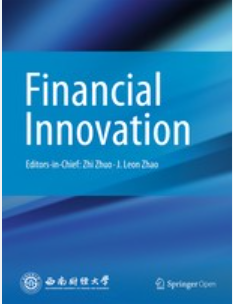提高零售银行客户流失预测性能的框架
IF 7.2
1区 经济学
Q1 BUSINESS, FINANCE
引用次数: 0
摘要
管理客户保留率对公司的盈利能力和企业价值至关重要。然而,预测客户流失是一项挑战。现有的相关研究主要集中在为预测客户流失而开发的模型类型上,很少或根本没有研究数据准备方法。这些方法会直接影响模式的识别,从而提高模型的预测性能。我们通过以下方法解决了这一问题:(1)采用特征工程方法生成一组适合银行业的潜在预测特征;(2)对多数类和少数类进行预处理,以改进分类模型模式的学习。该框架涵盖了最先进的数据预处理方法:(1)使用重复性、频率和货币价值概念进行特征工程,以解决不平衡数据集问题;(2)使用自适应合成采样算法进行超采样;以及(3)使用 NEASMISS 算法进行欠采样。数据预处理后,我们使用 XGBoost 和弹性网方法进行流失预测。我们用一个包含 300 多万客户和约 1.7 亿笔交易的数据集验证了所提出的框架。在精确度-召回曲线下面积、准确度、召回率和特异性方面,该框架优于文献中报道的其他方法。从实用的角度来看,该框架为管理者预测客户流失和制定银行业客户挽留策略提供了宝贵的信息。本文章由计算机程序翻译,如有差异,请以英文原文为准。
A framework to improve churn prediction performance in retail banking
Managing customer retention is critical to a company’s profitability and firm value. However, predicting customer churn is challenging. The extant research on the topic mainly focuses on the type of model developed to predict churn, devoting little or no effort to data preparation methods. These methods directly impact the identification of patterns, increasing the model’s predictive performance. We addressed this problem by (1) employing feature engineering methods to generate a set of potential predictor features suitable for the banking industry and (2) preprocessing the majority and minority classes to improve the learning of the classification model pattern. The framework encompasses state-of-the-art data preprocessing methods: (1) feature engineering with recency, frequency, and monetary value concepts to address the imbalanced dataset issue, (2) oversampling using the adaptive synthetic sampling algorithm, and (3) undersampling using NEASMISS algorithm. After data preprocessing, we use XGBoost and elastic net methods for churn prediction. We validated the proposed framework with a dataset of more than 3 million customers and about 170 million transactions. The framework outperformed alternative methods reported in the literature in terms of precision-recall area under curve, accuracy, recall, and specificity. From a practical perspective, the framework provides managers with valuable information to predict customer churn and develop strategies for customer retention in the banking industry.
求助全文
通过发布文献求助,成功后即可免费获取论文全文。
去求助
来源期刊

Financial Innovation
Economics, Econometrics and Finance-Finance
CiteScore
11.40
自引率
11.90%
发文量
95
审稿时长
5 weeks
期刊介绍:
Financial Innovation (FIN), a Springer OA journal sponsored by Southwestern University of Finance and Economics, serves as a global academic platform for sharing research findings in all aspects of financial innovation during the electronic business era. It facilitates interactions among researchers, policymakers, and practitioners, focusing on new financial instruments, technologies, markets, and institutions. Emphasizing emerging financial products enabled by disruptive technologies, FIN publishes high-quality academic and practical papers. The journal is peer-reviewed, indexed in SSCI, Scopus, Google Scholar, CNKI, CQVIP, and more.
 求助内容:
求助内容: 应助结果提醒方式:
应助结果提醒方式:


